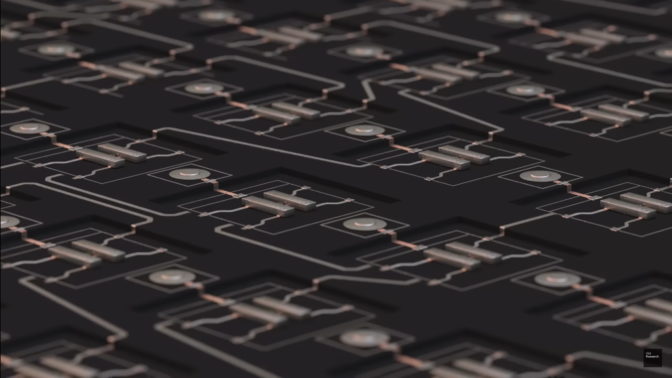Just as GPUs and DPUs enable accelerated computing today, they’re also helping a new kind of chip, the QPU, boot up the promise of quantum computing.
In your hand, a quantum processing unit might look and feel very similar to a graphics or a data processing unit. They’re all typically chips, or modules with multiple chips, but under the hood the QPU is a very different beast.
So, What’s a QPU?
A QPU, aka a quantum processor, is the brain of a quantum computer that uses the behavior of particles like electrons or photons to make certain kinds of calculations much faster than processors in today’s computers.
QPUs rely on behaviors like superposition, the ability of a particle to be in many states at once, described in the relatively new branch of physics called quantum mechanics.
By contrast, CPUs, GPUs and DPUs all apply principles of classical physics to electrical currents. That’s why today’s systems are called classical computers.
QPUs could advance cryptography, quantum simulations and machine learning and solve thorny optimization problems.
| QPUs | GPUs |
|---|---|
| Quantum processing units | Graphics processing units |
| Relies on quantum physics | Relies on classical physics |
| Uses qubits that can be more than 0 and 1 | Uses bits that are either 0 or 1 |
| Uses states of subatomic particles | Uses electricity switched in transistors |
| Great for cryptography and simulating quantum effects | Great for HPC, AI and classical simulations |
How Does a Quantum Processor Work?
CPUs and GPUs calculate in bits, on/off states of electrical current that represent zeros or ones. By contrast, QPUs get their unique powers by calculating in qubits — quantum bits that can represent many different quantum states.
A qubit is an abstraction that computer scientists use to express data based on the quantum state of a particle in a QPU. Like the hands on a clock, qubits point to quantum states that are like points in a sphere of possibilities.
The power of a QPU is often described by the number of qubits it contains. Researchers are developing additional ways to test and measure the overall performance of a QPU.
Many Ways to Make a Qubit
Corporate and academic researchers are using a wide variety of techniques to create the qubits inside a QPU.
The most popular approach these days is called a superconducting qubit. It’s basically made from one or more tiny metallic sandwiches called Josephson junctions, where electrons tunnel through an insulating layer between two superconducting materials.
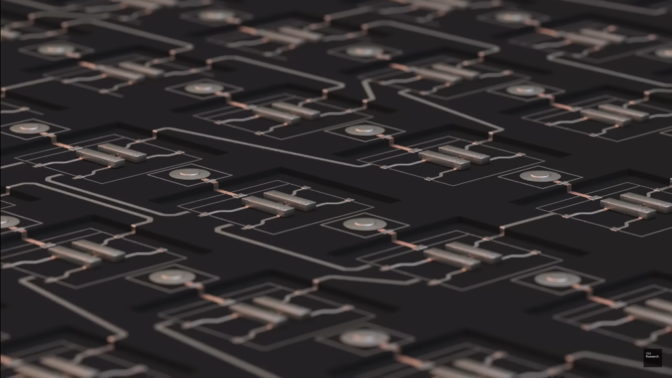
The current state of the art creates more than 100 of these junctions into a single QPU. Quantum computers using this approach isolate the electrons by cooling them to temperatures near absolute zero with powerful refrigerators that look like high-tech chandeliers. (See image below.)
A Qubit of Light
Some companies use photons rather than electrons to form qubits in their quantum processors. These QPUs don’t require expensive, power-hungry refrigerators, but they need sophisticated lasers and beam splitters to manage the photons.
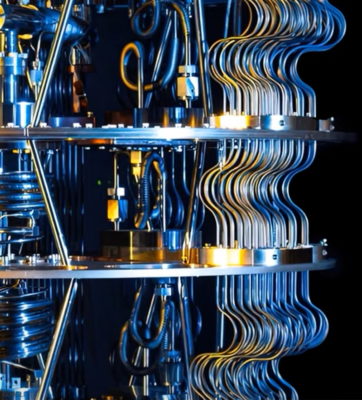
Researchers are using and inventing other ways to create and connect qubits inside QPUs. For example, some use an analog process called quantum annealing, but systems using these QPUs have limited applications.
It’s early days for quantum computers, so it’s not yet clear what sorts of qubits in what kinds of QPUs will be widely used.
Simple Chips, Exotic Systems
Theoretically, QPUs may require less power and generate less heat than classical processors. However, the quantum computers they plug into can be somewhat power hungry and expensive.
That’s because quantum systems typically require specialized electronic or optical control subsystems to precisely manipulate particles. And most require vacuum enclosures, electromagnetic shielding or sophisticated refrigerators to create the right environment for the particles.
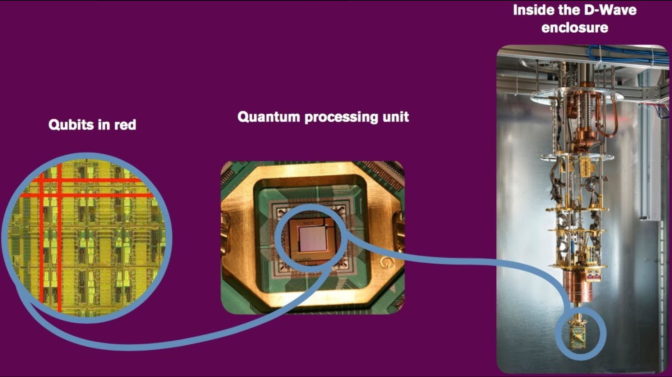
That’s one reason why quantum computers are expected to live mainly in supercomputing centers and large data centers.
QPUs Do Cool Stuff
Thanks to the complex science and technology, researchers expect the QPUs inside quantum computers will deliver amazing results. They are especially excited about four promising possibilities.
First, they could take computer security to a whole new level.
Quantum processors can factor enormous numbers quickly, a core function in cryptography. That means they could break today’s security protocols, but they can also create new, much more powerful ones.
In addition, QPUs are ideally suited to simulating the quantum mechanics of how stuff works at the atomic level. That could enable fundamental advances in chemistry and materials science, starting domino effects in everything from the design of lighter airplanes to more effective drugs.
Researchers also hope quantum processors will solve optimization problems classical computers can’t handle in fields like finance and logistics. And finally, they may even advance machine learning.
So, When Will QPUs Be Available?
For quantum researchers, QPUs can’t come soon enough. But challenges span the gamut.
On the hardware level, QPUs are not yet powerful or dependable enough to tackle most real-world jobs. However, early QPUs — and GPUs simulating them with software like NVIDIA cuQuantum — are beginning to show results that help researchers, especially in projects exploring how to build better QPUs and develop quantum algorithms.
Researchers are using prototype systems available through several companies like Amazon, IBM, IonQ, Rigetti, Xanadu and more. Governments around the world are beginning to see the promise of the technology, so they’re making significant investments to build ever larger and more ambitious systems.
How Do You Program a Quantum Processor?
Software for quantum computing is still in its infancy.
Much of it looks like the kind of assembly-language code programmers had to slog through in the early days of classical computers. That’s why developers have to understand the details of the underlying quantum hardware to get their programs running.
But here, too, there are real signs of progress toward the holy grail — a single software environment that will work across any supercomputer, a sort of quantum OS.
Several early projects are in the works. All struggle with the limitations of the current hardware; some are hampered by the limits of the companies developing the code.
For example, some companies have deep expertise in enterprise computing but lack experience in the kind of high-performance environments where much of the scientific and technical work in quantum computing will be done. Others lack expertise in AI, which has synergies with quantum computing.
Enter Hybrid Quantum Systems
The research community widely agrees that for the foreseeable future, classical and quantum computers will work in tandem. So, software needs to run well across QPUs, CPU and GPUs, too.
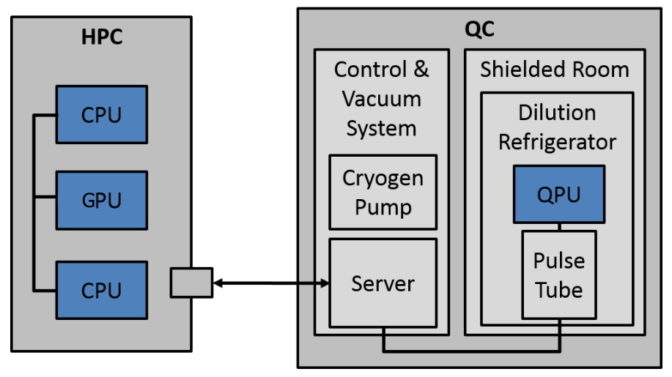
To drive quantum computing forward, NVIDIA recently announced the NVIDIA Quantum Optimized Device Architecture (QODA), an open platform for programming hybrid quantum systems.
QODA includes a high-level language that’s concise and expressive so it’s powerful and easy to use. With QODA, developers can write programs that run on QPUs in quantum computers and GPUs simulating QPUs in classical systems.
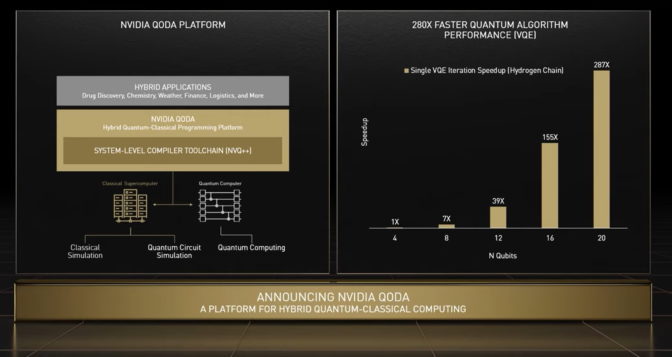
QODA will support every kind of quantum computer and every sort of QPU.
At its launch, quantum system and software providers including Pasqal, Xanadu, QC Ware and Zapata expressed support for QODA. Users include major supercomputing centers in the U.S. and Europe.
QODA builds on NVIDIA’s extensive expertise in CUDA software, which accelerates HPC and AI workloads for scientific, technical and enterprise users.
With a beta release of QODA expected before the end of the year, the outlook for QPUs in 2023 and beyond is bright.
—Yunchao Liu, a Ph.D. candidate in quantum computing at the University of California, Berkeley, assisted in the research for this article.
